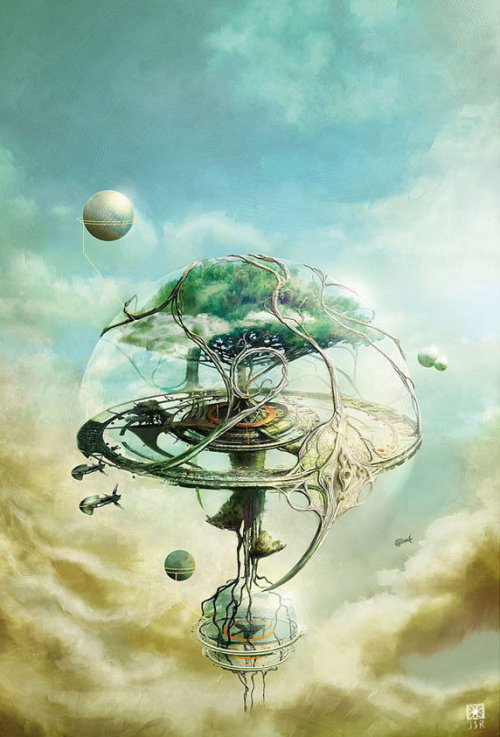
The meaning of tree symbolism differs significantly among world mythologies and religions, but one of the most commonly found motifs is that of the World Tree.
With important variants found in Mesoamerican mythic art, the World Tree in Indo-European lore is said to be located at the center of the cosmos. The tree’s roots dig deep into the earth while its branches point to the heavens.
David Leeming notes that the idea of the world tree is often linked to that of the world navel.
For the Tartars, a giant pine tree grows out of the navel of the earth and reaches to the home of the supreme ruler in heaven.¹
Depth psychologists like C. G. Jung say the World Tree is a mythic symbol that connects us to the psycho-spiritual powers of the underworld, the earth and heaven.
But this notion of the holistic World Tree should not overlook the idea that real psychological transformation is not always easy nor without challenges.
Peter Butcher notes that new paradigms, as larger ways of understanding, are often born of intense personal crises. The holistic vision of the World Tree is an admirable ideal and worthwhile goal for some, but others are not so fortunate and seem to be utterly ruined by their inner adventures.
People who have experienced expanded states of consciousness often encounter a period of inner chaos or disorientation. This has been described as a Death, the Dark Night, a Fall into Formlessness, Being Swallowed by a Monster, Entering Hell or the Void, and so on.²

Butcher says it’s essential for the seeker to “integrate a new way of seeing with old interpretations or constructs.”³ In Jungian terms, the psyche must achieve a new balance between unusual inner experiences and the practical demands of the outside world. And after a period of possibly alarming disorganization, the self must successfully reorganize into a greater whole.4
The notion of the world tree also has links to occult, Runic and Tarot lore because the most important world tree, Yggdrasill, is where the Norse god Odin hung himself upside down for nine days and nights in search of the secret of immortality.
Odin’s self-imposed ordeal is reflected in the Tarot mystery card of “The Hanged Man.” And it has also found its way into commentaries on Kabbalic mysticism.
—
¹David Leeming, The Oxford Companion to World Mythology, Oxford: Oxford University Press, 2005, p. 404.
² Peter Butcher, “Art Images Associated with States of Expanded Consciousness: A Study of the Individual Case,” Leonardo, Vol. 16, No. 3, Special Issue: Psychology and the Arts (Summer, 1983: 222-224), p. 222.
³ Ibid., p. 223.
4 But the issue is complicated. Take, for instance, the brilliant artists Vincent Van Gogh and Edvard Munch. Both feared losing their grip on “reality” at various times in their lives. Both spent time in psychiatric clinics. And yet both gave so much to the world. So to say that it’s best to achieve “wholeness and peace” according to the Jungian schema seems a bit pat. If these artists didn’t suffer their respective bouts of alienation, they probably wouldn’t have left such a wonderful legacy.
Related Posts » Aesir







Missed your informative posts… like this one especially… it is amazing how many parallels there are between philosophies, psychology and spirituality. Love symbolism. It is like faith… it can be interpreted in many ways, hold value and elude you all the same… it (like faith) is a belief…
LikeLike
Thanks enreal… as always you get to the heart of the matter! I just picked up a few more library books and plan to update this post, flesh it out a bit. When posting it I realized that I could do a better job but, having been away, the books I needed were not at hand…
LikeLike